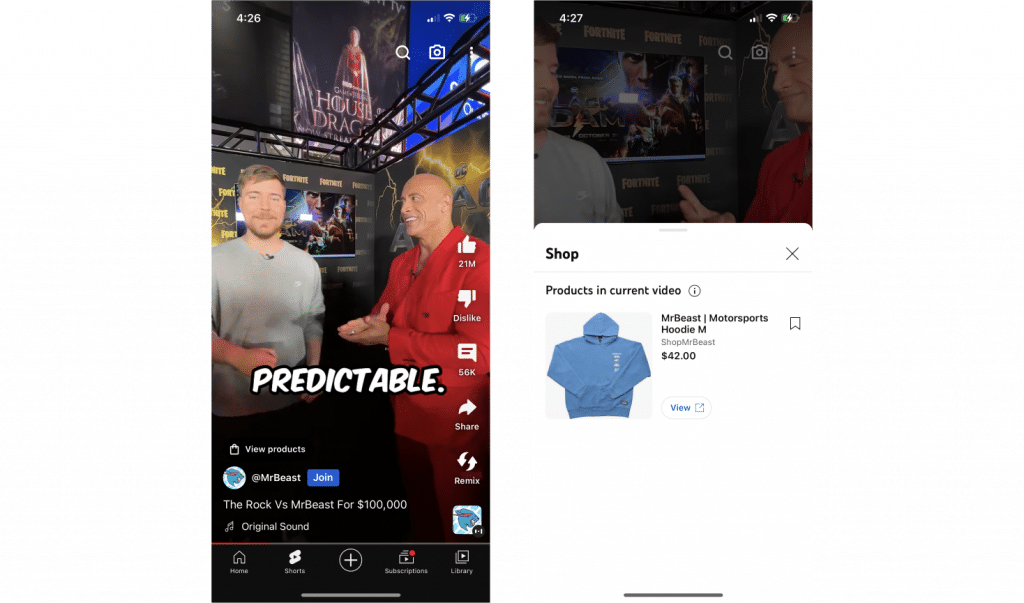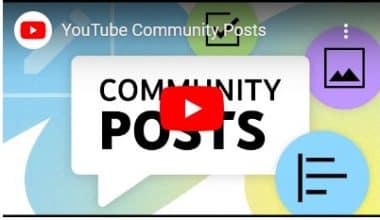How much do YouTube shorts pay? If you want to know the answer, you’re in the right place!
As a content creator, you should know how much YouTube shorts pay in 2024. But making money off YouTube shorts takes work. First, you need to understand how the algorithm operates, the requirements you must meet, and the current trends in content. It’s essential to keep up with trends because if you don’t, your content won’t generate the money it should. Although short-form videos bring less than regular videos ($0.01 – $0.06 per 1000 views on shorts against $1.61 and $29.30 on classic videos).
Still, it’s not a reason to give up. Popular content creators started with nothing, making over ten thousand dollars from shorts alone. I evaluate their experience and highlight important information that even a novice should know. You can implement these practices and start building your project, increasing the audience and the number of views and earning much more than before.
Key Points
- YouTube Shorts is a short-form video feature that YouTube introduced in 2020 to compete with rivals like Instagram Reels and TikTok.
- YouTube Shorts can be monetized, but the revenue per 1000 views is significantly lower than long-form videos ($0.01-$0.06 vs. $1.61-$29.30).
- To monetize Shorts, creators must be part of the YouTube Partner Program (YPP).
- Here is a quick tip to optimize your YouTube content: Ensure videos are longer than 10 seconds and vertical, use trending music/topics, use relevant keywords and hashtags in titles and descriptions, and Monitor analytics to improve audience engagement.
- YouTube pays creators monthly, typically between the 21st and 26th, with a $100 minimum payout threshold.
What Is YouTube Shorts?
YouTube Shorts is a short-form video feature that YouTube introduced in 2020 to compete with rivals like Instagram Reels and TikTok. Using this feature, content creators can record short videos of up to 60 seconds and add music/sound overlays to the YouTube app.
While creators on the platform have always (technically, since 2012) been able to use the app for creating videos, Shorts is different because it offers a few tools that are not available with regular videos. For starters, it offers a multi-segment camera that creators can use to string multiple clips together into a single short video. Creators can also control the playback speed, add tracks from an expansive music library, or access hands-free recording with countdown and timer tools.
Can You Monetize YouTube Shorts?
Yes! Monetizing regular long-form YouTube videos has been possible for more than 15 years now. In that time, creators, artists, and media companies earned over $50 billion from their YouTube content.
However, Shorts are a much newer format and weren’t originally part of the YouTube Partner Program (YPP). Fortunately for all those who wondered, “When will YouTube Shorts be monetized?” the platform announced monetization options in late 2022. Since then, creators focusing on YouTube’s short video format have earned money.
How Does YouTube Shorts Monetization Work?
Due to the nature of YouTube Shorts and the feed used to watch, the ad revenue payout differs slightly from traditional YouTube video ads. With traditional ads, one sole creator gets paid for all the ads running during their videos. However, with YouTube Shorts, ads are played between every few videos, so it doesn’t make sense for all that revenue to go to a single creator.
Instead, the revenue from those ads is pooled together into a single “creator pool.” These funds are then allocated out to Shorts creators based on their share of total views.
This ensures all creators are fairly compensated for their content, with the split based on the total number of views. So, creators with a higher reach will be paid more from the creator pool, and vice versa.
Read also: The Power of Short-form Content: A Guide to Maximizing Your Digital Marketing Efforts
YouTube Shorts Monetization Eligibility Requirements
To monetize YouTube shorts, creators need to be enrolled in the YouTube Partner Program.
There are two levels of monetization in the YouTube Partner Program, each with different thresholds and revenue opportunities.
#1. Fan Funding Access
This access allows creators to sell products on YouTube. It also unlocks fan funding features like paid channel memberships, Super Chat, Super Stickers, and Super Thanks. To apply to the program, you must have one of the following:
- 500 subscribers, three public posts, and three million valid public Shorts views in the past 90 days.
- 500 subscribers and three public posts in the past 90 days, plus 3,000 valid public watch hours on long-form videos in the past 12 months. This doesn’t count hours from Shorts, livestreams, ad campaigns, private, unlisted, or deleted videos.
#2. Ad Revenue and Fan Funding Access
In addition to fan funding, creators earn ad revenue (including YouTube Shorts monetization) and revenue from YouTube Premium subscribers. To apply to the program, you must have one of the following:
- 1,000 subscribers, plus 10 million public Shorts views in the past 90 days.
- 1,000 subscribers and 4,000 public watch hours on long videos in the last 365 days
Once you meet either of these thresholds, you can apply to YouTube’s Partner Program. YouTube will review your channel and determine your eligibility, which usually takes a month.
Additional eligibility requirements for the program include:
- The channel must follow all YouTube channel monetization policies.
- The creator must live in a country where the program is available.
- The creator can’t have any active community guidelines strikes against their channel.
- The channel must have two-step verification turned on and advanced features enabled.
- The creator must have or obtain an AdSense account.
How Much Does YouTube Shorts Pay?
YouTube shorts pay can vary from $0.01 to $0.06 per 1000 views. Unfortunately, this amount is far lower than long-form videos, where you can earn between $1.61 and $29.30 per 1000 views, the average being $1.25 to $2.5.
For instance, Bilatill is a YouTube channel with 20 million Short views monthly. But they get $0.05$ for 1000 views, which amounts to only $50 per million views.
You must get hundreds of millions of views monthly to earn money on Shorts.
Luckily, there are ways YouTube Shorts pay besides ads, which I’ll discuss later.
Ways for Making Money With YouTube Shorts
The golden rule for making money on Shorts is to create engaging, entertaining, and unique content. But the golden rule aside, other ways exist to make it big on YouTube and earn money. Let’s look at what they are.
#1. Merchandise
If you build a loyal audience, you can create and offer your merchandise as an additional revenue stream. Create video content that features your merchandise and announces new merchandise launches, tagging your products in those videos. Or, again, you can link to the merchandise store inside your description.
Here’s an example of what featuring your merch in your YouTube Short videos could look like:

Remember that tag products need to be heavily featured in the video. With your personalized merch, you get leeway with this. If you’re wearing it, you may get away with tagging it.
#2. Create Videos Consistently
To make a decent income from Shorts, you must garner millions of views and upload videos consistently.
There’s another reason it’s good to post Shorts often; the more you publish, the more one of your videos will go viral and bring your channel in front of a large number of viewers.
To help you create videos consistently and efficiently, use the following comprehensive Content Creation Planning Template below
Lamphills Content Creation Planning Template
#3. Use Shorts to Grow Viewership for Long-form Videos
While this is not strictly speaking a direct form of YouTube Shorts monetization, it’s an important consideration when calculating ROI for your YouTube Shorts.
Sure, the YouTube Partner Program payouts for YouTube Shorts are not spectacular. But, especially for new YouTube creators, Shorts can be one of the fastest ways to build your audience. You can then create and monetize regular long-form YouTube videos, which earn ad revenue at a much higher RPM.
#4. Secure Paid Brand Partnerships
Brand partnerships are another method of video monetization. Instead of having YouTube sell ad space on your behalf, you interact directly with brands to negotiate sponsorship deals.
Typically, brands pay creators to record and publish product reviews, endorsements, or other types of content. To secure a paid partnership, you can develop a creator website, approach brands directly, or join an influencer platform to help brands find and contact you.
#5. Affiliate Marketing
Using affiliate links to promote goods or services in a YouTube Short’s comment section is known as affiliate marketing. You get paid when a viewer buys something after clicking on your link.
For example, if you are evaluating a laptop in your short, you can include an Amazon affiliate link in the item’s comments section. You receive a commission if someone clicks on the link and purchases a laptop (the commission rate for laptops is 2.5% of the transaction price).
#6. Patreon Or Other Crowdfunding Platforms
If you were an artist in Renaissance Europe, you probably had a patron who would help pay for your creations. With Patreon, content creators can market their work through paid subscriptions, bringing this idea into the current era.
YouTube Shorts can be effectively monetized using videos since they are the most famous content format on Patreon. You might utilize Shorts to release a teaser from a lengthy video and inform viewers that a Patreon membership tier allows them to see the entire story.
Alternatively, create a community and converse with your patrons using the Community option on Patreon.
So, what’s the advantage of using Patreon over YouTube channel memberships? First, you can create a Patreon with no minimum subscriber or watch time threshold.
Beyond that, you’ll need to explore each program to see which makes more sense for your specific situation and the perks you want to provide.
How Much Does YouTube Pay for 1 Million Views on Shorts?
YouTube Shorts can pay between $50 and $70 for every 1 million views, or roughly $0.05 to $0.07 per 1,000 views. However, some say earnings can be as low as $32 for 1 million views.
YouTube Shorts uses a different monetization model from long-form videos. Instead of ads embedded in the content, Shorts ad revenue is pooled and divided between YouTube and creators. This means that creators receive a cut even if an ad doesn’t play before their Short, but their cut is also more minor.
How Much Money Is 100K Views on YouTube Shorts?
With the YouTube Partner Program, 100k views will earn creators about $3.33. However, if they continue creating new content and reaching a wider audience, that number can increase exponentially. Plus, there are more ways to make money from YouTube Shorts than one.
YouTube Shorts Content Optimization Tips
Optimizing your shorts to the needed condition is the only way to give people the desired content. Once your shorts are optimized, you will reach 1 million views extremely fast. Below are some simple steps you should follow.
First, consider that your video is longer than 10 seconds and has been created in vertical format. Second, ensure you use trending music and represent trending topics in your video. People follow trends, so you must also follow them to satisfy your audience. Next, you must create a proper title and description for your shorts. The description may contain keywords and trending hashtags. Creators often underestimate hashtags, and it’s their mistake because hashtags are crucial for the YouTube algorithm and should appear in every video to help you get more views on YouTube shorts.
Also, pay attention to YouTube short viewer analytics to see which videos get more views, comments, and likes. This will help you understand what needs to be done to improve audience engagement.
Does YouTube Pay Monthly?
Yes, YouTube pays eligible creators in the YouTube Partner Program monthly, usually between the 21st and 26th of each month. To receive payment, creators must have earned a minimum of $100 in their accounts. If earnings don’t reach this threshold in one month, they roll over to the next month until the threshold is met.
Do You Need 1000 Subscribers to Monetize YouTube Shorts?
To monetize through Shorts, you need 1000 subscribers plus two other criteria: 10 million public Shorts views in the last 90 days or 4,000 public watch hours for your long-form videos for the last 12 months.
Bottom Line
As you can see, there are several ways to monetize your content and to use Shorts as part of your overall content strategy. As YouTube continues to develop and expand the Shorts platform, additional monetization opportunities may be designed specifically for YouTube Shorts creators.
Similar Articles
- How to Successfully Contact YouTubers in 2024: Easy Solutions
- Best Time to Upload YouTube Videos for Massive Views in 2024
- How to Get More YouTube Subscribers Free: No Ads, No Spending a Dime






